Search

Publications
The Caspian cluster of Special Economic Zones alongside the North-South ITC: key projects, outlook, interaction with the Caspian countries

Key advantages
The North-South International Transportation Corridor (ITC) is currently on the radar. Its key advantages vs other routes are, in particular, decreasing the hauling distance two times and even more, which allows for the shippers to save both on time and costs.
In its Southern part, the North-South ITC allows for several cargo transportation routes:
- The Trans-Caspian route Ц using Russian and Iranian sea ports;
- The Western branch of the corridor Ц direct railway transportation via Azerbaijan;
- The Eastern branch of the corridor Ц direct railway transportation via Kazakhstan and Turkmenistan.
The Trans-Caspian route of the North-South ITC is a multi-modal logistical route connecting the European part of Russia with India, the countries of Central Asia, Middle East, South-Eastern Asia and Africa via Astrakhan transportation and logistical hub, the Caspian Sea and Iranian sea ports.
Taking into account the current sanctions-related restrictions, the North-South ITC becomes exclusively competitive for the foreign trade players due to drastic decrease of cargos delivery routes. Over the recent two years, stable increase of cargo turnover has been observed in Russian ports on the Caspian Sea, which indicates that this route is in demand.
Trans-Caspian route
A series of important measures for the Trans-Caspian route are currently being implemented in the Russian Federation on the assignment of the RF President:
- A special economic port zone (SEZ) was established in the Astrakhan Region in 2020 in the area of Olya sea port;
- The dredging operations are in progress in the Volga-Caspian navigable canal. The unprecedented number of dredging machines is engaged. On top of that, the first dredging ships are being built at the Lotos plant in Astrakhan, they are the first in Russia with the capacities many-fold exceeding that of the available dredging fleet;
- The Lotos plant is the resident of Lotos SEZ and is part of the United Ship-Building Corporation, modern bulk carriers and mixed navigation container ships of high capacity are currently being built there.
All these projects are being implemented with the support of the RF Government and are targeted at comprehensive development of cargo transportation via the North-South ITC in the long term.
The special economic port zone is combined with the special economic industrial zone Lotos in the Caspian cluster.
The port SEZ occupies the territory of more than 700 hectares in the Liman District of the Astrakhan Region close to Olya sea port.
The industrial zone is located in the Nariman District. Today, its first residents are successfully operating here: Lotus shipbuilding plant and the plant for producing geo-synthetic materials. The biggest plant of the Southern Federal District for producing fish and pets feed will soon be launched, the first Iranian plant in Russia for producing detergents is under construction along with many others. The plant for producing brushes and abrasive materials is currently under design with participation of investors from Italy. Negotiations between Russian and Chinese companies about building the container plant are at their final stage.
Development outlook
The port SEZ development in the Astrakhan Region is divided into two stages.
The first stage assumes the setup of two berths in Olya sea port. As of now, the temporary grain storage facilities are already erected here, part of the equipment is already installed, and the site for container terminal is being prepared. In August, the first batch of feed barley left the berth to go to Iran Ц circa 3 thousand tons. In the near future, the investor plans to increase the volumes up to 12 thousand tons per month, i.e., 150 thousand tons per annum. The final launch is scheduled for the second half of 2024.
The federal funds are also used to build the utilities, roads, crane tracks and other infrastructure facilities.
The second stage assumes building of the new port facility including a modern container terminal close to the Zaburunny lake (7 km to the south of Olya sea port).
Currently there are two registered residents in the port SEZ.
Production and logistics center Caspiy LLC (setup of container terminal). The resident company is using its own funds to build customs infrastructure facilities, railway tracks and to purchase loading machines. The plan is to start building the container terminal in October 2023. Cranes and equipment supply contract was executed. The commissioning of the container terminal is scheduled for July 2024. The berthsТ rated throughput is 1 mtpa. The area to be developed is about 15 hectares.
Caspian Agri-Terminal LLC is the second resident company in charge of building the grain and oil terminals with the rated throughput of over 1 mtpa for grain and over 300 ktpa for oil. The plan is to reach the rated throughput in 2028.
Some other projects are currently under review including those with participation of investors from India, Turkmenistan and other countries.
We need to especially focus on the cooperation with the Caspian countries. We are exploring the mutually beneficial cooperation with our partners from Azerbaijan, Iran, Kazakhstan and Turkmenistan. Thus, during the visit to Azerbaijan the negotiations with the top management of Aliat port took place, and the interest of Azerbaijanian party was emphasized to using the Astrakhan port infrastructure during the peak hours for the railways for transporting the agricultural products from Azerbaijan.
Turkmenistan also demonstrated strong interest Ц the leaders of the country issued an assignment to explore the possibility of setting up the Turkmenistan transportation and logistics center in the Astrakhan port SEZ, and this center will be servicing other Central Asian countries, which do not have access to the Caspian Sea.
Cooperation with Iranian partners is a separate vector. Cooperation Agreement was signed between Lotos Special Economic Zone and the biggest Iranian Mostazafan Foundation. The Foundation is ready to invest into sea portsТ infrastructure and equipment, to participate in organizing cargos transit across the territory of Iran from Astrakhan to Mumbai and backwards, in removing administrative barriers, in trading and marketing.
On top of that, agreements were signed with Iranian Special Economic Zones Anzali and Chabahar, which provides for organizing a logistic chain between the Northern and Southern Iranian sea ports.
India is a strategic partner for us. We are interested in the presence of Indian business in the Special Economic Zones of the Caspian Cluster. Currently we are exploring various options of cooperation: attracting new companies for opening new sites in the industrial SEZ, performing logistical operations in the port SEZ, and joint implementation of investment projects.
We conducted a number of meetings and negotiations with representatives of authorities, logistic companies, Indian sea ports operators and core sectoral agencies.
Africa is a very promising developing vector. This year, a number of agreements were signed with companies from Egypt and Guinea with the economic and humanitarian forum Russia Ц Africa in Saint Petersburg. These agreements pertain to partnering in logistics, cargo transportation, education and further improvement of relations.
Our region is also working with some companies from Belarus to organize transportation of their goods through the port SEZ, with Arab states representatives and Chinese partners.
We should emphasize once again that the Astrakhan Regional Government is undertaking significant efforts to further develop the North-South transportation corridor including its key element Ц the Caspian cluster. Many regional initiatives are supported at the very top level of Russian Government. We would like to invite all the potential stakeholders to participate in implementing the Caspian cluster projects.







